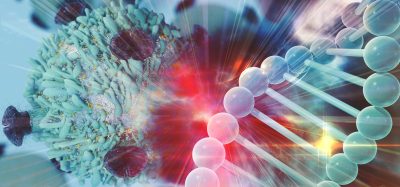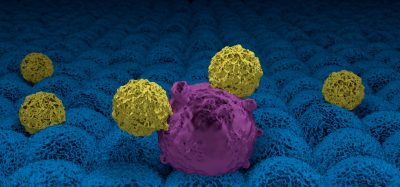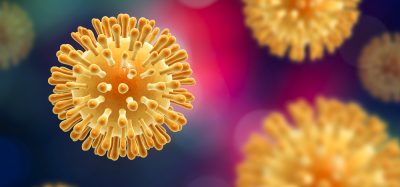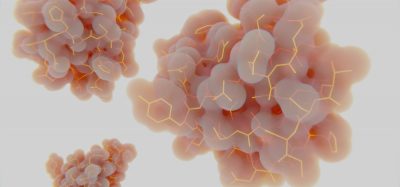CRISPR-dead Cas9 could offer non-addictive treatment for pain, study shows
Posted: 11 March 2021 | Victoria Rees (Drug Target Review) | No comments yet
A new CRISPR gene therapy for chronic pain has been shown in mice to temporarily repress a gene involved in sensing pain.

A gene therapy for chronic pain could offer a safer, non-addictive alternative to opioids. Researchers at the University of California San Diego, US, developed the new therapy, which works by temporarily repressing a gene involved in sensing pain.
According to the team, the gene therapy could be used to treat a broad range of chronic pain conditions, from lower back pain to rare neuropathic pain disorders – conditions for which opioid painkillers are the current standard of care.
“What we have right now does not work,” said first author Ana Moreno. “There is a desperate need for a treatment that is effective, long-lasting and non-addictive.”
The idea for the treatment emerged when Moreno came across a paper about a genetic mutation that causes humans to feel no pain. This mutation inactivates a protein in pain-transmitting neurons in the spinal cord, called NaV1.7. In individuals lacking functional NaV1.7, sensations like touching something hot or sharp do not register as pain. However, a gene mutation that leads to overexpression of NaV1.7 causes individuals to feel more pain.
“By targeting this gene, we could alter the pain phenotype,” Moreno said. “What is also interesting is that this gene is only involved in pain. There are not any severe side effects observed with this mutation.”
Moreno used a CRISPR gene editing tool that utilises “dead” Cas9, which lacks the ability to cut DNA. Instead, it sticks to a gene target and blocks its expression. She hypothesised this could be used to repress the gene that codes for NaV1.7.
“It does not cut out any genes, so there are no permanent changes to the genome. You would not want to permanently lose the ability to feel pain,” she said. “One of the biggest concerns with CRISPR gene editing is off-target effects. Once you cut DNA, that is it… With dead Cas9, we are not doing something irreversible.”
“In some common diseases, the issue is that a gene is being misexpressed. You do not want to completely shut it down,” said Professor Prashant Mali, co-senior author of the study. “But if you could turn down the dose of that gene, you could bring it to a level where it is not pathogenic. That is what we are doing here. We do not completely take away the pain phenotype, we dampen it.”
The researchers engineered a CRISPR-dead Cas9 system to target and repress the gene that codes for NaV1.7. They administered spinal injections of their system to mice with inflammatory and chemotherapy-induced pain. These mice displayed higher pain thresholds than mice that did not receive the gene therapy; they were slower to withdraw a paw from painful stimuli (heat, cold or pressure) and spent less time licking or shaking it after being hurt.
The treatment was tested at various timepoints. It was still effective after 44 weeks in the mice with inflammatory pain and 15 weeks in those with chemotherapy-induced pain. Moreover, the treated mice did not lose sensitivity or display any changes in normal motor function.
To validate their results, the researchers performed the same tests using another gene editing tool called zinc finger proteins. They designed zinc fingers that similarly bind to the gene target and block expression of NaV1.7. Spinal injections of the zinc fingers in mice produced the same results as the CRISPR-dead Cas9 system.
“We were excited that both approaches worked,” Mali said. “The beauty about zinc finger proteins is that they are built on the scaffold of a human protein. The CRISPR system is a foreign protein that comes from bacteria, so it could cause an immune response. That is why we explored zinc fingers as well, so we have an option that might be more translatable to the clinic.”
The researchers say this solution could work for a large number of chronic pain conditions arising from increased expression of NaV1.7, including diabetic polyneuropathy, erythromelalgia, sciatica and osteoarthritis. It could also provide relief for patients undergoing chemotherapy.
The researchers will next work on optimising both approaches (CRISPR and zinc fingers) for targeting the human gene that codes for NaV1.7. Trials in non-human primates to test for efficacy and toxicity will follow.
The findings are published in Science Translational Medicine.
Related topics
CRISPR, Gene Therapy, Genomics, In Vivo
Related conditions
Chronic pain
Related organisations
diabetic polyneuropathy, erythromelalgia, osteoarthritis, sciatica
Related people
Ana Moreno, Professor Prashant Mali






